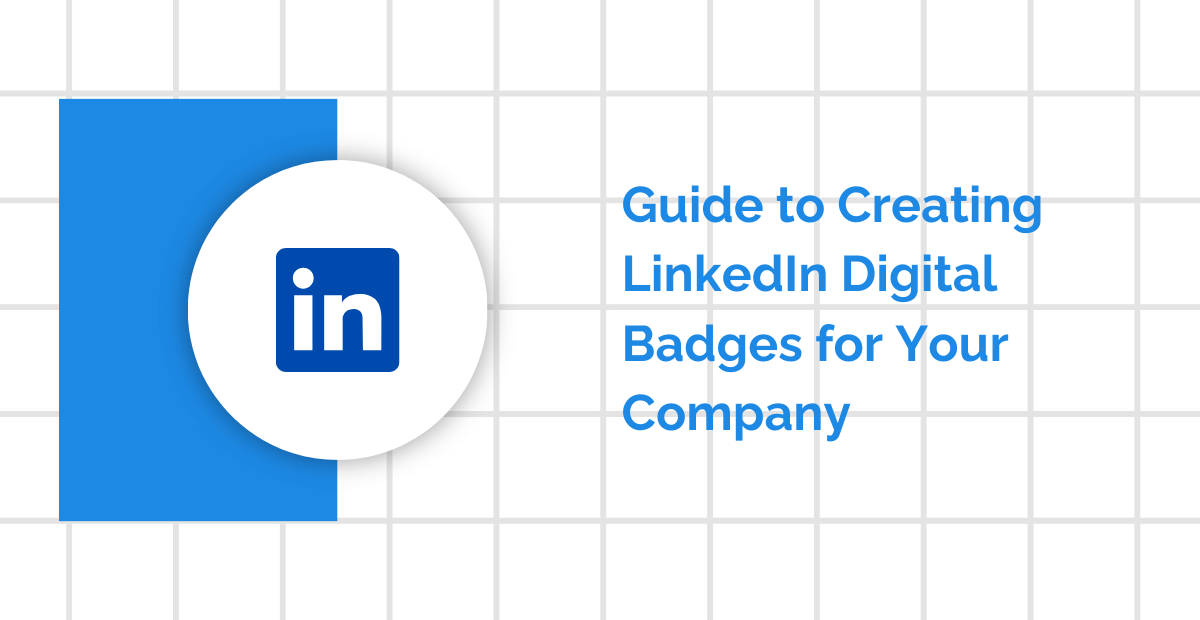In today’s digital age, the challenge of effectively showcasing one’s qualifications and accomplishments has become increasingly daunting.
Traditional credentials often fail to capture the full spectrum of an individual’s skills and expertise, leaving them overlooked in competitive environments. This problem is exacerbated by the sheer volume of credentials available online, making it difficult for employers and peers to discern genuine proficiency from the noise.
However, amidst this sea of qualifications lies a powerful solution: the Digital Badge. In this article, we will delve into the realm of digital badges, exploring their significance, utility, and how they offer a compelling solution to the challenges of credentialing in the digital era.
What is a Digital Badge?
Digital badges are a type of digital credential, offering a modern alternative to traditional paper certificates. They serve as pictorial representations of an individual’s achievements and skills, incorporating shapes, colors, banners, icons, and fonts to convey the credential’s significance.
These badges are more than just images; they contain metadata, such as badge name, description, issuing organization, and recipient details, providing comprehensive information about the credential’s value and relevance.
Hence, they play a crucial role in showcasing competencies, allowing third parties like potential employers and recruiters to verify candidates’ abilities swiftly and accurately. They’re versatile tools, issued across various platforms to recognize achievements, signify growth, demonstrate qualifications, and illustrate membership or affiliation.
Further Reading: What is the Difference Between Digital Badges and Traditional Certificates

What is a Digital Open Badge?
One prominent subset of digital badges is the Open Badge. Open Badges are digital images embedded with verifiable data about the represented award, developed by the Mozilla Foundation in 2011 alongside the Open Badge Standard.
These badges adhere to specific technical standards, ensuring that they contain essential information about the badge earner, the criteria for earning the badge, the issuing organization, and the demonstrated skills or competencies. Hence, they offer unparalleled credibility and security.

Why use a Digital Badge?
Digital badges are incredibly versatile tools, offering a wide range of uses for showcasing achievements. Whether it’s demonstrating attendance at an event or completing specific modules within a degree or certification program, issuers have full control over designing badges to represent various accomplishments.
These badges also provide a detailed snapshot of a candidate’s skills, going beyond mere proof of completion. By including metadata, issuers can offer valuable insights into the skills demonstrated, the criteria for earning the badge, and the level of expertise attained. Furthermore, they embed verifiable data about the award, ensuring authenticity and trustworthiness in credentialing processes.
For example, consider a traditional certificate versus a digital badge awarded for proficiency in coding. The traditional certificate might display the recipient’s name and the issuing organization, along with an issue date. However, the digital badge provides a comprehensive overview of the coding program, detailing the specific languages learned, projects completed, and coding challenges overcome. With this detailed information, it’s clear which credential offers a more thorough understanding of the individual’s coding abilities and which credential others may strive to earn for themselves.
Where are Digital Badges popularly used?
Digital badges are becoming increasingly popular in various fields and contexts in recent times. Digital Badges are most popularly used today for:
- Learning outcomes in professional certification
- Rewarding completion of training programs
- Representing module completion within higher education
- Demonstrating achievements, skills, and knowledge from online learning
- Membership and learning representation by professional associations and nonprofits
- Affiliation, attendance, engagement, or involvement in events
- Recognizing individual module completion and overall certification completion
- Acknowledging product knowledge and training outcomes in corporate settings
- Value addition for customers of Learning Experience Platforms (LXP) and Learning Management Systems (LMS)
- Digitizing and modernizing verifiable credentials by awarding bodies
Why should you issue a Digital Badge?
1. Recognize and Reward
Digital badges are a great way to recognize and reward achievements, often used in education and certification programs. They provide additional context, and stackable micro-credentials can showcase a learner’s mastery in a subject over time.
2. Motivate Participation and Completion
By offering digital badges, individuals are motivated to participate and complete programs, events, or certification courses. The anticipation of receiving a shareable, verifiable award drives motivation, especially when used as a form of gamification.
3. Efficient Verification and Cost Savings
Digital credentials streamline the verification process, leading to cost savings by eliminating the need for physical certificates and transcripts while ensuring the validity of qualifications.
4. Retain Issuer Control
Unlike traditional credentials, issuers maintain full control over digital badges. They can expire, update, or remove them at any time, preventing fraud and allowing for easy updates based on organizational changes.
5. Enhanced Credibility and Reputation
Issuing verified and recognized digital badges enhances the credibility and reputation of the issuer, attracting more students or customers who value credibility.
6. Increased Brand Awareness
Sharing digital credentials promotes the issuer’s brand, increasing visibility and attracting more students or customers to their programs. Digital badges serve as organic marketing tools, as recipients share them on social media and other platforms. When combined with strategies like affiliate marketing, this can further amplify reach through trusted partners who promote your credentialing programs in exchange for commissions or incentives.
7. Drives Enrollment
Digital credentials can draw more students to programs as they value shareable, verifiable qualifications for boosting their professional profiles and job prospects.
What are the Benefits of Digital Badges for Recipients?
1. Portable Skills
Digital badges allow you to effortlessly display your skills and achievements on platforms like LinkedIn or your resume. This ensures potential employers can quickly assess your capabilities, enhancing your professional image and candidacy.
2. Credential Longevity
Even if a badge expires or the issuing organization closes, your achievements remain accessible, providing a long-term record of your skills and qualifications. This enduring evidence can be invaluable when seeking job opportunities or furthering your education.
3. Share Your Success
Easily share your badges on social media or through email, celebrating your accomplishments and expanding your visibility within your network. This sharing capability can be especially beneficial when seeking job opportunities or connecting with industry professionals.
4. Proven Skills and Qualifications
Digital badges offer tangible proof of your skills and qualifications, making you a standout candidate for employers or educational institutions. This clear evidence of your capabilities can distinguish you from other applicants and highlight your commitment to ongoing professional development.
5. Stay Ahead of the Game
By earning digital badges, you demonstrate a commitment to continuous learning and staying updated on industry trends. This proactive approach can give you a competitive edge in the job market, increasing your chances of securing interviews and job offers.
Digital Badges vs Digital Certificates
| Aspect | Digital Badges | Digital Certificates |
| Representation | Visual representation of achievement | Formal representation of achievement |
| Embedded Data | Badge image embedded with data | Certificate format displaying data |
| Design | Utilises shapes, colors, ribbons, and icons | Uses logos, copy, recipient and stakeholder details |
| Shareability | Embeddable in email signatures and webpages | Shared as a URL for online verification |
| Common Usage | Shared and engaged with online | Often used for printing and hard-copy verification |
| Purpose | Represents module or node completion within pathways | Serves as completion or final credential for pathways |
Digital badges and digital certificates both serve to represent achievements, but the choice between them depends on factors like issuer preference and recipient needs. Badges offer a visual representation and can be embedded in email signatures or shared online, while certificates follow a formal format and are often printed for verification. Badges use colorful designs, while certificates rely on logos and recipient details. Badges are commonly used for module completion within pathways, while certificates serve as final credentials.
How to Create a Quality Digital badge?
Creating top-notch digital badges is simpler than you might think! To get started, here’s a handy guide:
1. Choose the Right Platform
Opt for a trustworthy platform that ensures security and ease of badge management. To get started, you can check out our free platform.
2. Involve Everyone
Gather input from instructors, administrators, and learners to refine badge criteria and designs. This collaborative approach ensures badges reflect meaningful achievements.
3. Embrace Onboarding
Select an onboarding package tailored to your team’s needs. Learn from experts and adopt best practices to enhance the user experience and badge quality. Discover the onboarding packages that best align with your needs here.
4. Set Clear Criteria
Define precise criteria for earning badges, ensuring they represent significant accomplishments accurately.
5. Offer Pathways and Stacking
Encourage students to keep learning and earn more badges by offering different ways to earn badges, like completing different levels or combining badges together to unlock new achievements.
6. Track Progress
Use analytics to monitor badge earning and sharing, gaining insights to improve your program over time.
By following these steps, organizations can create digital badges that hold meaning, are secure, and provide value to both badge earners and stakeholders. Ready to get started on your badge journey? Let’s make your achievements shine!

 Author :
Author : 




